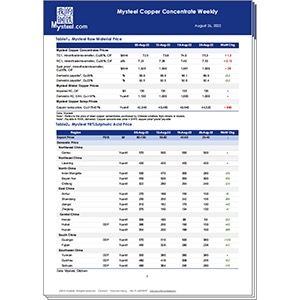China plays a pivotal role in the global copper market, not only as the world’s largest consumer of copper but also as a significant producer. Understanding copper prices in China’s commodity market is crucial for anyone involved in this sector, from traders and investors to manufacturers who rely on copper for production. This blog explores how to comprehend the dynamics of copper prices in China and why keeping an eye on these trends is essential.
Understanding the Copper Price in China’s Commodity Market

1. Economic Indicators
The price of copper is closely tied to China’s economic health. As China’s economy goes, so does the demand for copper, which is used extensively in construction, electronics, and manufacturing. Key economic indicators to watch include GDP growth rates, manufacturing PMI (Purchasing Managers’ Index), and infrastructure spending. These indicators can provide insights into the future demand for copper.
2. Supply Factors
China’s domestic copper production and the availability of imported copper concentrate can significantly influence prices. Any disruptions in mining operations, either due to environmental policies or geopolitical tensions, can tighten supply and push prices up. Conversely, increases in production or imports can lead to a surplus, reducing prices.
3. Government Policies
China’s government policies regarding import tariffs, environmental regulations, and subsidies for industries using copper can drastically affect copper prices. For example, stricter environmental regulations might reduce mining outputs domestically, whereas incentives for renewable energy could increase copper usage in green technologies.
4. Stock Levels and Inventories
Copper prices are sensitive to changes in inventory levels. Data on copper stock in major Chinese warehouses can provide critical clues about the balance of supply and demand. Lower inventories typically signify higher demand or supply issues, pushing prices up.
5. International Influence
While domestic factors are significant, international events and markets also play a crucial role. The strength of the US dollar, for instance, affects copper prices globally since commodities are typically priced in dollars. Additionally, global economic trends and trade policies can impact copper demand and prices in China.
6. Market Sentiment and Speculation
The commodity market is also driven by sentiment and speculation. Investors’ perceptions of future demand and supply conditions can cause price fluctuations. Keeping an eye on market news and analysis can help gauge sentiment.
Why Mysteel is Your Essential Resource
For those looking to dive deeper into the complexities of the copper market in China, Mysteel offers unparalleled insights and real-time data. With its comprehensive coverage, detailed reports, and timely updates, Mysteel stays ahead with the latest changes in copper prices across various Chinese markets. And from regional price differences to inventory levels at major hubs, Mysteel covers it all, enabling more nuanced and informed decision-making.
Conclusion
To truly understand and effectively respond to the dynamics of copper prices in China’s commodity market, accessing detailed, accurate, and timely information is key. I encourage you to browse Mysteel regularly for the latest updates and in-depth analysis of copper prices in China’s commodity market. With Mysteel, empower yourself with the knowledge needed to make well-informed decisions in this vital commodity market.
